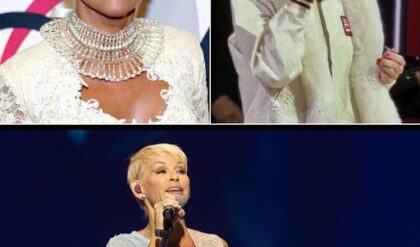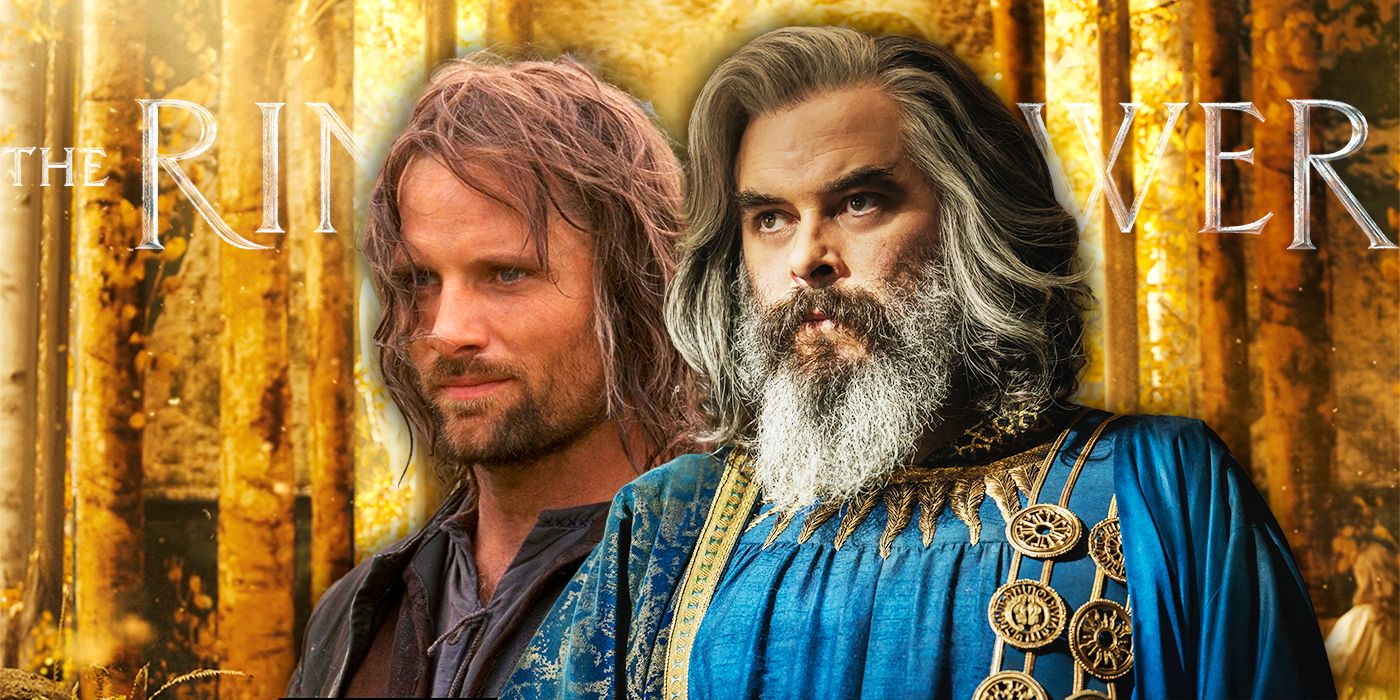
For die-hard fans of J.R.R. Tolkien’s The Lord of the Rings and subsequent texts, the character of Pharazôn will not be unfamiliar. Tolkien wrote about the last king of Númenór in The Silmarillion, edited by his son Christopher Tolkien and published after the author’s death. However, in older versions of Tolkien’s drafts, multiple versions of the monarch’s rise to power exist. It still remains to be seen how Amazon’s The Lord of the Rings: The Rings of Power intends to tell his tale in full, but audiences are getting a long-awaited glimpse into seeing how his story plays out on screen. In the latest season of the series, Pharazôn makes his power play and usurps the throne from the inherent heir (Míriel) in a moment of opportunism.
While it’s not clear what an eagle’s appearance meant at Múriel’s coronation, Pharazôn used the moment to seize the ruling seat of Númenór for himself. As a king of Númenór, his legacy directly connects with Aragorn, whose story features in The Lord of the Rings during Middle-earth’s Third Age. And Pharazôn directly reflects what could have been if Aragorn fell victim to the temptations of power and the One Ring.
Descendents of Númenór Were Scattered Across Middle-earth by the Third Age
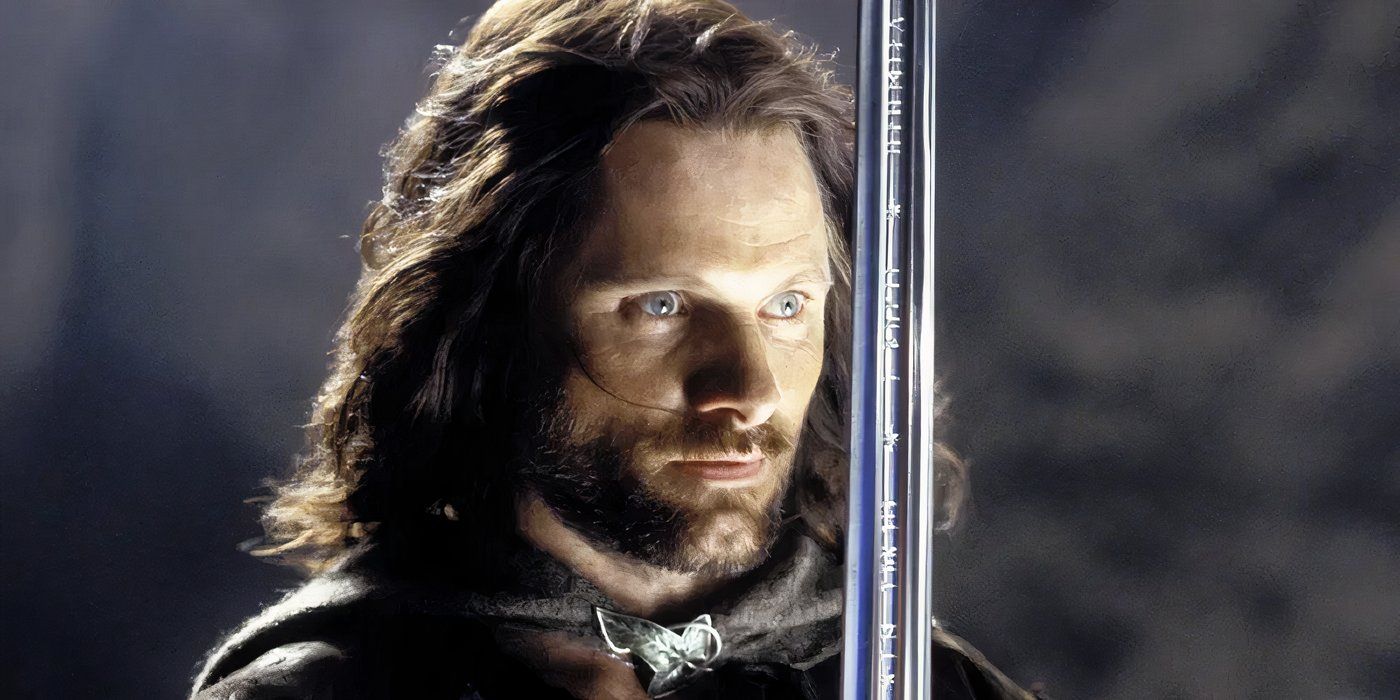
Rings of Power takes place during Middle-earth’s Second Age, well before the events of The Lord of the Rings. What audiences are seeing play out is the origin story of Aragorn’s (also known as Strider) ancestors. In Peter Jackson’s adaptation of The Lord of the Rings: The Two Towers, Éowyn refers to Aragorn as one of the Dúnedain, a race of men blessed by the Elves “with long life.” As a result of their services during a conflict known as the War of the Wrath, the Valar (ethereal powers that helped to shape Middle-earth) gave the Númenoreans an island for their dwelling and longer lifespans. By the Second Age, during the events of Rings of Power, the relations between the Elves and Númenoreans had clearly soured. The dissatisfaction between the two races gave power to the dissent that continued to fester during Rings of Power’s second season.
The descendants of the Númenoreans became the Rangers of Middle-earth. The island of Númenor was eventually consumed by a great wave, as Míriel sees in her vision through the seeing stone in Rings of Power. Tolkien details these events in The Silmarillion, and Míriel perishes during these events. It has yet to be seen how the series will handle this major story point, but audiences are getting glimpses into how it might play out. Already, the adaptation is diverging from the source material, especially in the case of the relationship between Míriel and Pharazôn. But the show may have its reasons for telling its own version of the history of the fall of Númenor.
In Tolkien’s text, Pharazôn is depicted differently than he is in Rings of Power. In creators J.D. Payne and Patrick McKay’s series, Pharazôn first appears as chancellor to the Queen Regent, Míriel, which differs considerably from his description in The Silmarillion. Pharazôn is a seafarer and warrior, according to Tolkien who waged important campaigns and battles in his time. And his desire for eternal life is credited as his eventual downfall. This jealously of the Elves’ immortality is hinted at in the most recent episodes of Rings of Power. Additionally, Pharazôn does not prove to be above the influence of Sauron.
Tolkien had two different versions of Pharazôn’s rise to power and his downfall. While Tolkien’s son, Christopher, was tasked with editing Tolkien’s many notes for publication after his father’s death — one key moment in particular related to Pharazôn. In one version of the story, Pharazôn forces Míriel to marry him. In another, he seduces her until she becomes enamored of him. Both instances result in Pharazôn gaining direct access to the throne via his marriage to an heir. Christopher Tolkien chose the former to include as canon in The Silmarillion. It still remains to be seen whether Rings of Power will include any of these specifics in Pharazôn and Míriel’s storyline, but there is still time.
The Eagle Appearing in Rings of Power Episode 3 Could Be a Bad Omen for Pharazôn
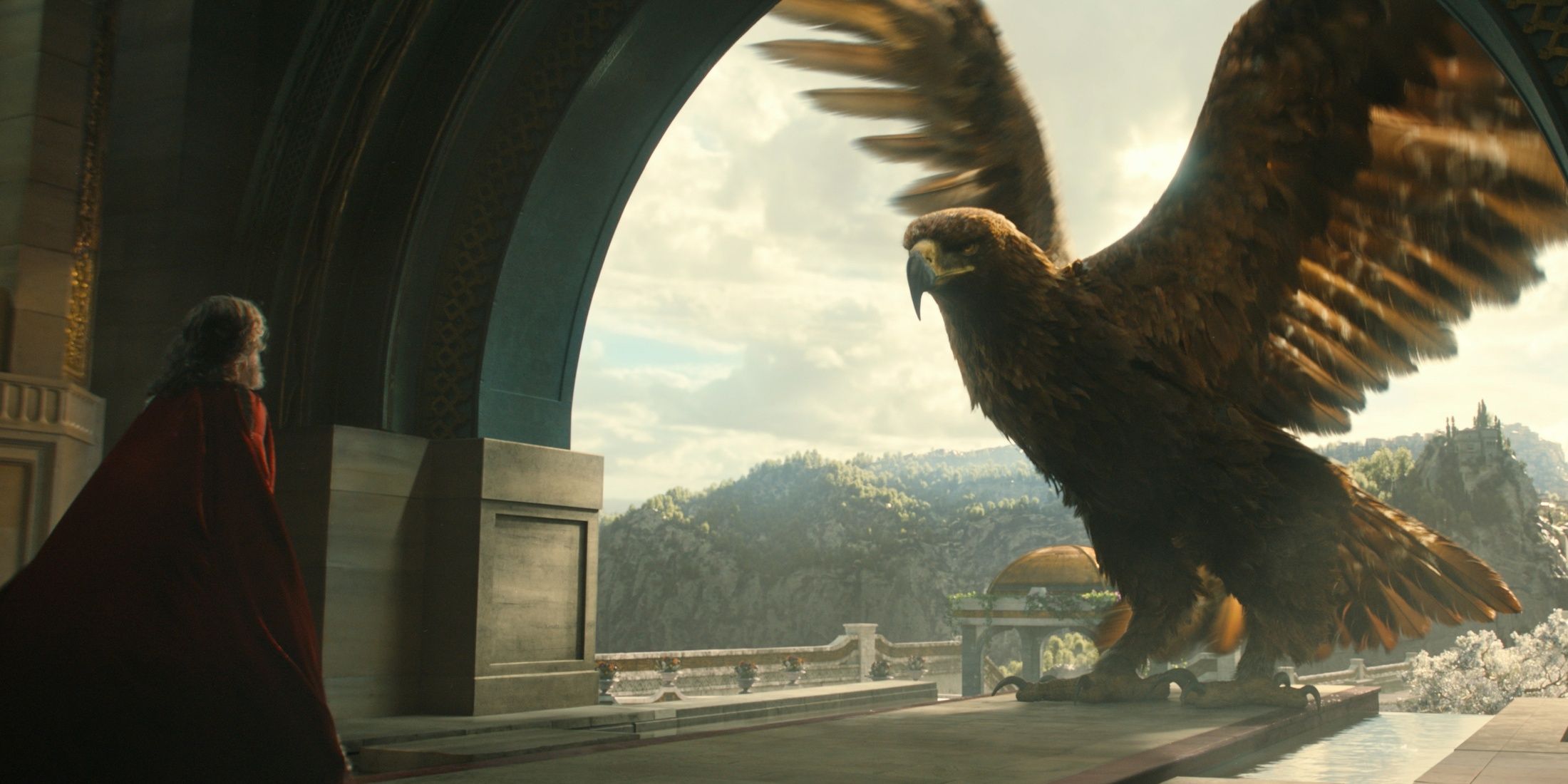
During Míriel’s coronation in Episode 3 of Rings of Power, an eagle appears and ignites a strong backing for Pharazôn supporters. It’s not entirely clear what the appearance of the eagle exactly means. But it’s apparent how the onlookers, especially those in support of Pharazôn interpret it. The trust between Míriel and her people is broken after it’s revealed she’s been using the seeing stone to inform her decisions in governing her kingdom. And since the relationships between Elves and Númenóreans has so disintegrated, this breeds discontent. The supporters of Pharazôn choose to view this as a sign that their paragon is meant to seize power and take the throne for himself.
In Tolkien mythology, however, the role of the eagles isn’t always as straightforward as Pharazôn’s supporters would believe. Like the Istari, the wizards sent to guide the peoples of Middle-earth, The Great Eagles are almost angel-like beings. They serve the Valar and act as messengers and even spies as to the goings on of the continent nestled within the world of Arda. They are rarely meant to get directly involved in its conflicts. It’s entirely possible that a Great Eagle was sent to Númenór in that moment, as a warning to its citizens to not stray from their current path. Pharazôn, himself, may have misconstrued the eagle’s presence as one of support as opposed to the omen of foreboding it was meant to be.
Whether or not the final marriage chapter Tolkien wrote between Míriel and Pharazôn will play out Rings of Power remains to be seen. It would surely add an intriguing element to the story. There already seems to be more brewing between Míriel and Elendil than just a relationship between a sea captain and his queen. And if Rings of Power is missing anything in this moment, it’s a sweeping romance. Although Disa and the dwarven Prince Durin’s relationship cannot be discounted, the tension building between Elendil and Míriel is palpable. And if that tension were to include Pharazôn into the mix, it could ignite an even greater conflict in Númenór’s final hours.
Pharazôn Is a Darker Version of Aragorn
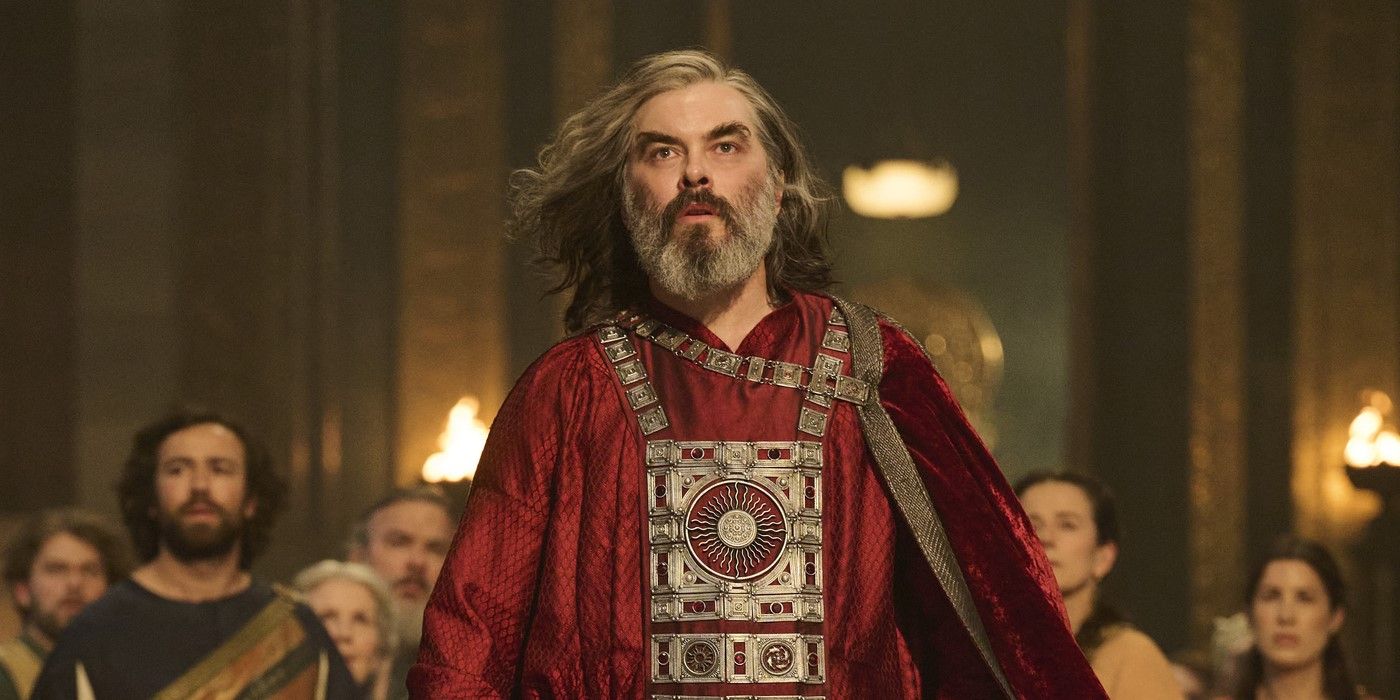
The internal battle Aragorn faced as a future king and descendant of Númenór — at least in Jackson’s interpretation — was his fear of giving into a desire for power fueled by the One Ring. Knowing he’s a descendant of Isildur, a victim of Sauron’s creation, Aragorn feared more than anything that he would fall prey to the same fate as his predecessors. Jackson amped up this idea in his films for dramatic effect in order to give Aragorn more of an arc, and it works well dramatically. What audiences are seeing play out with Pharazôn is almost a mirror image of Aragorn’s own personal conflict. However, Pharazôn lacks the humility characteristic of the Ranger of the North. Indeed, according to Tolkien, Pharazôn is directly influenced by Sauron before he meets his end.
In the history Tolkien outlines of Middle-earth in his supplemental materials to The Lord of the Rings, Pharazôn takes Sauron hostage after a campaign against Mordor. As a prisoner, Sauron manages to sway Pharazôn to his own ends. What results is an attack on the Valinor that plays into Pharazôn’s innate desire for immortality. The mortal weakness that Aragorn fears centuries later is ever present in Pharazôn. With or without the One Ring, Pharazôn’s intimate connection to Sauron shows how things might have played out, had Aragorn fallen victim to his ancestor’s devices. And it will be Elendil — Aragorn’s direct ancestor — who carries on the legacy of the Númenóreans into continental Middle-earth, not Pharazôn.
Payne and McKay have chosen to tackle deep Tolkien lore in Rings of Power. And it’s intriguing to see how the connection to The Lord of the Rings continue to play out in Season 2. With three episodes remaining in this season, audiences have yet to see whether or not Númenór will meet its end in this season or the next. Whenever it happens, Tolkien fans know Pharazôn has already got the ball rolling when it comes to the demise of a once-fabled kingdom.



